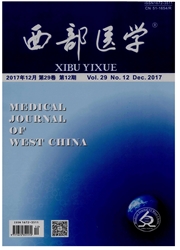

 中文摘要:
中文摘要:
2013年2月在国内陆续出现人感染新型H7N9禽流感病毒的病例,这是全球第一次发现的一种新的亚型流感病毒,该病毒属于新型三元重配体病毒。至2013年5月30日WHO的报道显示,在我国内地已有131例患者确诊,并且死亡39例,死亡率高达28%。H7N9禽流感病毒在禽类中感染致病性低,而在人类中感染致病性高。2014年5月21日,山东烟台再现H7N9 1例。疫情提示应继续注重对此病毒的研究,以防止H7N9疫情再次爆发。本文从微生物学角度对H7N9禽流感病毒的生物学性状、致病性与免疫性、微生物学检查法及防治原则进行综述,并提出相关建议,供临床研究参考。
 英文摘要:
英文摘要:
From February 2013,Chinese mainland has been found in cases of human infection with novel HTN9 bird flu virus,which is the world's first discovery of a new subtype of influenza A virus,and it belongs to a new triple reassortant virus. Up to May 30,2013,WHO reports showed that in the Mainland of China had 131 patients diagnosed and 39 cases died,the mortality rate is as high as 28%. HTN9 avian influenza virus in poultry infected with low pathogenic but highly pathogenic infection in humans. May 21,2014, Yantai reproducted H7N9 cases again, the patient was a 61 years old retired worker. The reappear of this disease remind people should continue to set focus on the research of this virus in order to prevent the outbreak of HTN9 again at present stage. This paper summarized and analyzed HTN9 avian influenza virus's biological characteristics, pathogenicity, microbiological examination methods and prevention principles from a microbiological point of view,hoping to provide reference for future clinical research.
 同期刊论文项目
同期刊论文项目
 同项目期刊论文
同项目期刊论文
 期刊信息
期刊信息
